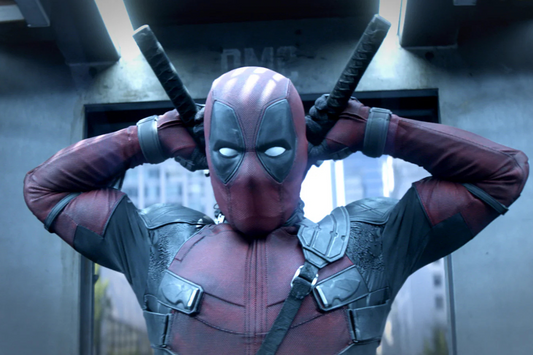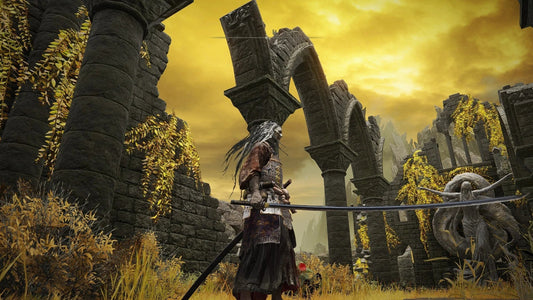
The Evolution of Samurai Swords: From Tachi to Katana
Samurai swords, known for their elegance and lethal efficiency, are iconic symbols of Japanese culture. However, the journey from the ancient Tachi to the revered Katana is a story of evolution in craftsmanship, technology, and martial culture. This evolution reflects the changing needs of the battlefield and the aesthetic tastes of feudal Japan. In this article, we'll explore the fascinating transformation of samurai swords, examining their historical significance and how they continue to inspire modern media and culture.
The Birth of the Tachi: The Predecessor to the Katana
What is the Tachi?
The Tachi was the earliest form of the Japanese sword, developed during the Heian period (794–1185). It was a long, curved sword with a blade length typically between 70 to 80 cm. The Tachi was designed for cavalry use, with the curve aiding slashing attacks from horseback. The blade was worn edge-down, which differentiated it from the later katana.
Design and Craftsmanship
Tachi blades were crafted using traditional folding techniques to create a sharp, durable edge. The signature curve of the Tachi was a result of differential hardening, where the blade's spine cooled slower than the edge, causing it to curve naturally during the quenching process. This method also produced the iconic hamon (temper line) on the blade.
Historical Significance
The Tachi was a symbol of status and power. It was often elaborately decorated, with gold and silver inlays on the hilt and scabbard. Samurai lords presented them as gifts to temples and shrines, demonstrating the sword's spiritual and ceremonial importance.
The Transition from Tachi to Katana
Why the Change?
As warfare tactics evolved during the Kamakura (1185–1333) and Muromachi (1336–1573) periods, so did the need for more versatile weapons. The Tachi's long, curved design was excellent for mounted combat but less effective in close-quarter battles. The katana emerged as a response to the need for a sword that could be drawn quickly in confined spaces.
Key Differences Between Tachi and Katana
| Feature | Tachi | Katana |
|---|---|---|
| Blade Orientation | Worn edge down | Worn edge up |
| Length | Generally longer (70-80 cm) | Shorter, more maneuverable |
| Use | Primarily cavalry | Versatile for foot combat |
| Drawing Technique | Slower, not optimized for Iaijutsu | Designed for quick draw (Iaijutsu) |
The Influence of Iaijutsu
The katana's edge-up design allowed samurai to perform Iaijutsu, a quick-draw technique that enabled them to unsheathe and strike in one fluid motion. This adaptation was particularly useful during the Sengoku period (1467–1603), when samurai needed to react swiftly to surprise attacks.
The Rise of the Katana: A Perfected Design
Craftsmanship and Technique
The katana's design retained the curvature of the Tachi but with a shorter blade, usually around 60 to 70 cm. Master swordsmiths, such as the legendary Masamune, honed the art of katana-making by perfecting the tamahagane (steel) folding process. This process enhanced the blade's strength, flexibility, and sharpness, contributing to the katana's reputation as a superior weapon.
Cultural and Symbolic Significance
By the Edo period (1603–1868), the katana had become more than just a weapon. It symbolized the samurai's soul, embodying their honor, discipline, and code of Bushido. The katana was often paired with a shorter sword (wakizashi) as part of the daisho set, representing the samurai's social status.
Famous Katana Examples
- Kamura Katana: Forged by Masamune, this katana was wielded by historical figures like Tokugawa Ieyasu and sold for $418,000.
- Okanehira Tachi: Though originally a Tachi, it signaled the evolution to katana design with its curved blade and significant historical ties.
The Evolution Continues: Hybrid Blades and Modern Interpretations
Hybrid Swords of the Late Edo Period
As Japan transitioned into the Meiji Restoration (1868–1912), samurai status declined, and the need for functional battle swords diminished. However, the art of sword-making evolved into a blend of tradition and modernity. Swords produced during this time combined elements of both Tachi and Katana often made more for ceremonial purposes than combat.
Samurai Swords in Modern Media
The katana has not only survived but thrived in modern media, including movies, anime, and video games:
- Movies: The Last Samurai and Kill Bill showcased the katana's deadly beauty and cultural mystique.
- Anime: Series like Rurouni Kenshin and Demon Slayer use katana as central weapons, often with supernatural elements.
- Video Games: Ghost of Tsushima brings historical accuracy and samurai swordplay to life, allowing players to wield a katana with precision.
The Legacy of the Katana
Why Does the Katana Endure?
The katana's legacy is a blend of functional excellence and symbolic power. It represents the perfection of Japanese craftsmanship, combining art, technology, and martial discipline. Its journey from the Tachi to modern pop culture icons reflects not only an evolution of the weapon itself but also the changing face of Japanese culture.
The Katana's Influence on Modern Weapons
Even in modern Japanese series like Jujutsu Kaisen, cursed weapons resembling katanas showcase the blade's lasting appeal. These adaptations continue to highlight the katana's status as a weapon of legends, bridging historical authenticity with imaginative storytelling.
The Timeless Edge
From the mounted slashes of the Tachi to the swift, lethal strikes of the Katana, the evolution of samurai swords tells a story of adaptation and mastery. The katana remains an enduring symbol of Japan’s martial heritage, a blade whose story is still being written in every swipe of the screen and swing of the controller. Its journey from the battlefields of feudal Japan to the pages of manga and the frames of anime underscores the timeless allure of the samurai sword.




